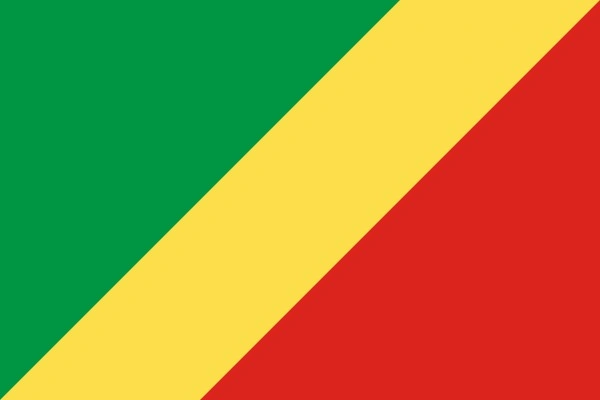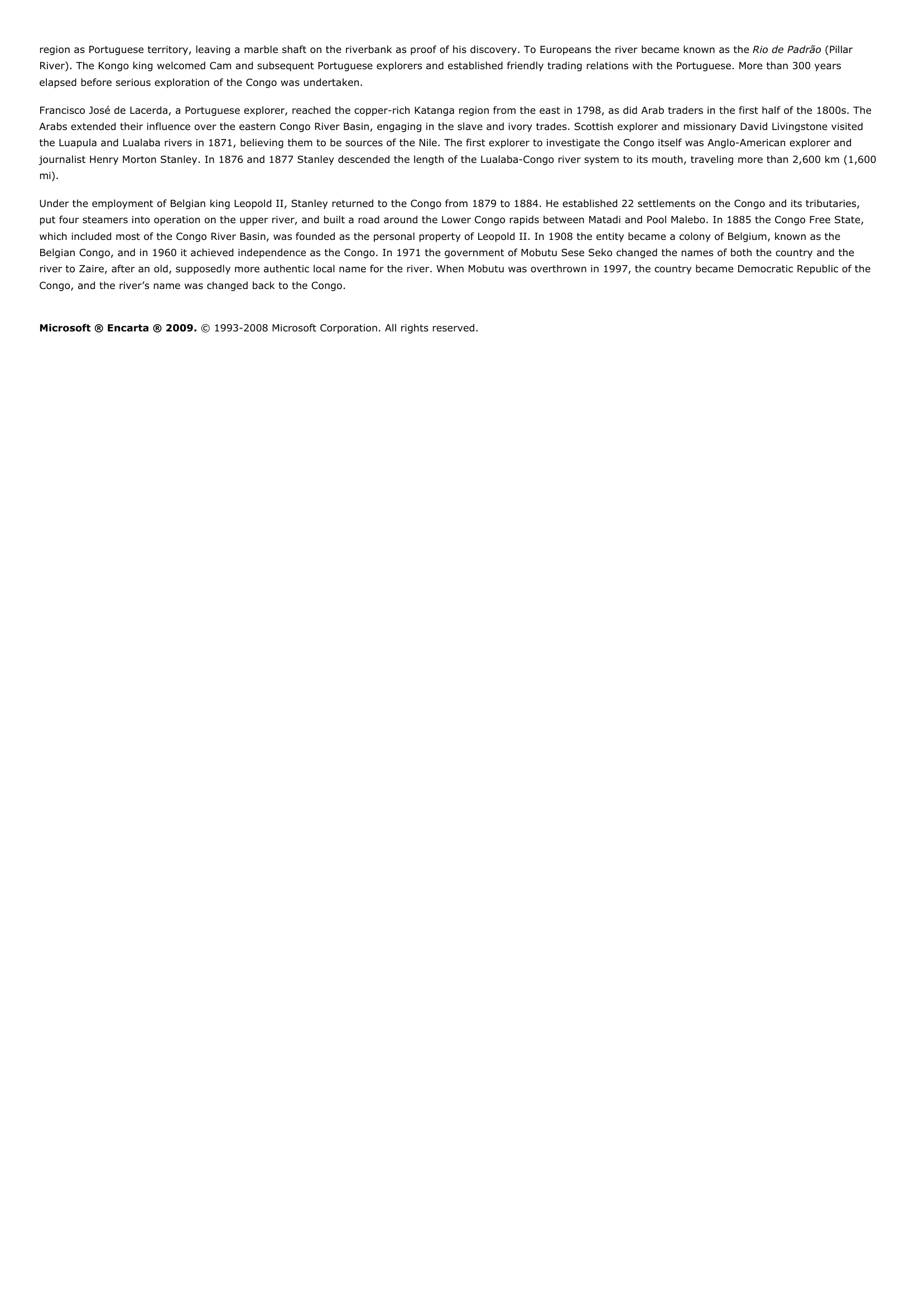Congo (river) - Geography.
Publié le 03/05/2013

Extrait du document


«
region as Portuguese territory, leaving a marble shaft on the riverbank as proof of his discovery.
To Europeans the river became known as the Rio de Padrão (Pillar River).
The Kongo king welcomed Cam and subsequent Portuguese explorers and established friendly trading relations with the Portuguese.
More than 300 yearselapsed before serious exploration of the Congo was undertaken.
Francisco José de Lacerda, a Portuguese explorer, reached the copper-rich Katanga region from the east in 1798, as did Arab traders in the first half of the 1800s.
TheArabs extended their influence over the eastern Congo River Basin, engaging in the slave and ivory trades.
Scottish explorer and missionary David Livingstone visitedthe Luapula and Lualaba rivers in 1871, believing them to be sources of the Nile.
The first explorer to investigate the Congo itself was Anglo-American explorer andjournalist Henry Morton Stanley.
In 1876 and 1877 Stanley descended the length of the Lualaba-Congo river system to its mouth, traveling more than 2,600 km (1,600mi).
Under the employment of Belgian king Leopold II, Stanley returned to the Congo from 1879 to 1884.
He established 22 settlements on the Congo and its tributaries,put four steamers into operation on the upper river, and built a road around the Lower Congo rapids between Matadi and Pool Malebo.
In 1885 the Congo Free State,which included most of the Congo River Basin, was founded as the personal property of Leopold II.
In 1908 the entity became a colony of Belgium, known as theBelgian Congo, and in 1960 it achieved independence as the Congo.
In 1971 the government of Mobutu Sese Seko changed the names of both the country and theriver to Zaire, after an old, supposedly more authentic local name for the river.
When Mobutu was overthrown in 1997, the country became Democratic Republic of theCongo, and the river’s name was changed back to the Congo.
Microsoft ® Encarta ® 2009. © 1993-2008 Microsoft Corporation.
All rights reserved..
»
↓↓↓ APERÇU DU DOCUMENT ↓↓↓
Liens utiles
- Congo (river) - geography.
- St. Lawrence (river) - Geography. I INTRODUCTION St. Lawrence (river) (French Saint-Laurent), river
- Amazon (river) - Geography.
- Colorado (river, North America) - Geography.
- Mississippi (river) - Geography.


